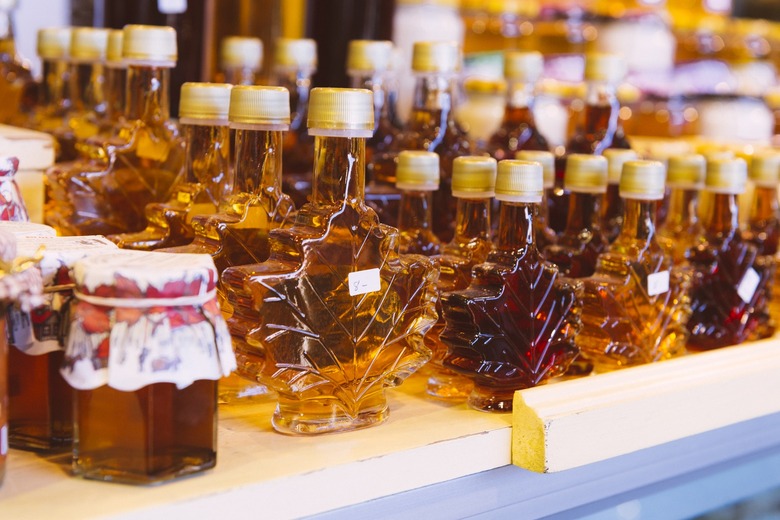Why Is Maple Syrup So Expensive?
Poured over pancakes, drizzled on your French toast, and even eaten over freshly gathered snow (if you have some handy) maple syrup in all of its sweet, syrupy, amber glory is undeniably delicious. As well as being a wonderful accompaniment to almost all breakfast foods, maple syrup is also a wonderful replacement for refined sugar.
While it is equally high in sugar, and, like regular white sugar should be consumed in moderation, maple syrup does have some great things to offer — among other things, the delicious elixir contains numerous antioxidants, has a low glycemic index, and fights inflammatory diseases. There is also some evidence to suggest that it may help protect against cancer (whereas some evidence suggests that refined sugar might actually contribute to it.)
Clearly there are more reasons than one to buy and use maple syrup in lieu of other, more refined sweeteners. So why isn't everyone using more maple syrup? At the very least, why isn't everyone using pure maple syrup on their pancakes and waffles in place of syrups based on corn or other sweeteners? Probably because it is so much more expensive, but why is that?
What many people might not know is that producing maple syrup is an incredibly long, expensive and labor-intensive process. The sugaring season (that's right, maple syrup is a seasonal crop) begins at the end of winter and the beginning of spring, when the frozen sap of the maple trees thaws and begins to flow. Maple trees are tapped and the sap is gathered, and then the long process of boiling down the sap begins.
It takes 30-50 gallons of sap to make one gallon of syrup — an amount of sap that can take a single mature maple tree and entire sugaring season to produce! That's right; it takes a lot of time and a huge amount of hard work to make any amount of maple syrup. From tapping the thousands of trees, installing and maintaining the miles and miles and miles of tubing that brings the sap from the trees to the "sugar shack" where it can be boiled, all of the lengthy steps contribute to the high price of maple syrup, which reached an average of $35 per gallon in the U.S. in 2017!
So while maple syrup is expensive, that price is a natural reflection of both its scarcity and its labor-intensive production. If you think maple syrup costs more money than its worth, perhaps a $27,000 melon and 10 other insanely expensive foods will help you to gain some perspective!
